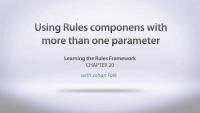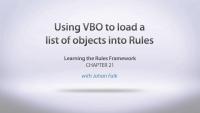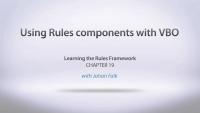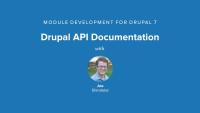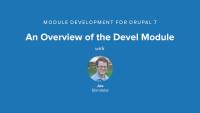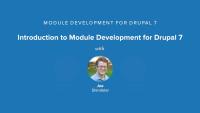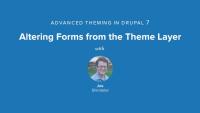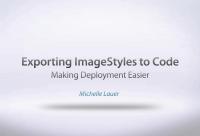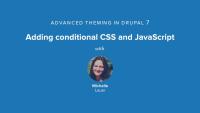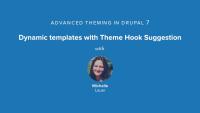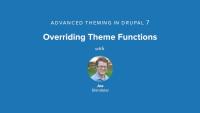This screencast shows “how you can use multiple-parameter Rules components in VBO and get the additional parameters as action configuration,” which translates to:
- If you have more than one parameter for a Rules component, you can still use it with VBO.
- Any additional parameters will be displayed as action configuration, meaning that the person executing the VBO gets to choose parameter value.
- Sadly, you can’t access data from the view item being actioned – you’ll have to stick with fixed input values. (If you want to use data from the processed item, you could actually do this inside the Rules component!) This is an issue being worked on.
- If you have complex parameters – such as taxonomy terms instead of just an integer – you can (mostly) use entity ID in the direct input mode.
- You can, by coding, change the form elements used for input. It is probably better to target the Rules data widget than doing a standard form_alter, but both will work.
- You could, for example, use this for changing comment settings on nodes, or adding selected tags to nodes. (Both examples shown in this screencast.) You could also use it for, say, sending customized messages or something. Or cloning existing nodes with changes specified in parameters.
- Bonus: If you add an entry to a multiple-value field in an entity, Rules won’t pick up that the entity has changed – make sure to add a “save entity” action in the rule.
Not mentioned in this screencast but still good to know:
- You can have Rules components without any parameters as well. No sweat.
- You can use Rules components without any parameters matching the View type too. In that case, you’ll have to specify all the parameters manually.
- If you have a component with several parameters matching the view type, the first one will be auto-populated by VBO – the rest you have to set manually.
Additional resources
Rules guide (Drupal.org)
This screencast shows the awesome functionality of loading entity lists into Rules with help of VBO. As an example, a rule is set up that, once a day, removes any stick front page content that is older than one week. To do similar cools stuff yourself, the following steps may be useful:
- You need a view that lists the entities you want to work on in Rules. Note that you don’t need a display of the view – and it might even be better not to have one if you don’t want the view to be displayed somewhere.
- However, you need one bulk operations field. The type of bulk operations field determines what entity type will be sent to Rules. Note that you don’t need any actions enabled for the field – it is enough that it is present.
- You need a rule that, as an action, loads entities from a VBO. (This is available under the “Views bulk operations” group.) All view displayes with at least one VBO field will be selectable.
- The action provides a list of entities, that can be used just like other lists in Rules. Combine with loops, actions and Rules Scheduler to make awesomeness happen.
Additional resources
Rules guide (Drupal.org)
This screencast shows how you can use Rules components in VBO, allowing much more complex and flexible actions than comes out of the box with VBO. The episode covers:
- How to create a simple Rules component.
- How component parameters are used by VBO – in particular that it is useful to have a single node as parameter if you want to use a component with a node view.
- Some words about what the provided variable option for Rules components means.
- An example showing how to use VBO to close (and hide) comments using VBO + Rules in combination.
- Some comments about creating more complex Rules components.
Additional resources
List operations with Views (Drupal.org)
This screencasts presents some of the settings available when configuring a bulk operations view. It covers:
- Controlling access to your VBO, and why that is important.
- Showing actions as buttons rather than a select list.
- The new cool option for selecting all items on all view result pages.
- Turning check boxes into radio buttons.
- Showing or hiding the result of the bulk operations.
- Showing action configuration on the view page.
- How to skip the confirmation page.
- How to give your actions customized labels.
Additional resources
Views Bulk Operations (VBO) guide (Drupal.org)
In this video you'll learn how to use api.drupal.org the canonical source for information about Drupal's hooks, APIs, and code documentation in order to find out information about implementing a particular hook, making use of a particular function or library of functions, and even gaining a better understanding of some of the big picture concepts behind Drupal's code and APIs.
This video walks through the handy devel module from http://drupal.org/project/devel and demonstrates the tools it provides for debugging, inspecting and analyzing the code and SQL queries happening on your site. In this video you'll also learn about some of the helper functions built into the devel module that make it simpler to inspect the large nested arrays that you'll commonly come across when writing code for Drupal.
You may not have heard of the function dsm() before now. It is a legacy function and dpm() is the newer name. The two functions are identical since dsm() is just a wrapper for dpm().
The idea is that dsm() was a poor name for the function, it's short for drupal set message, but what was later decided that drupal print (as in print_r) message was better.
The difference between those two and kpr() is that dpm() does a permissions check to make sure the current user has permission to view devel's output, and then puts the krumo'd variable dump into the message queue via drupal_set_message(). This means that dpm() will work and let you see the output even if you're redirected. Great for debugging forms. kpr() just krumo's and dumps the value right here, right now. No permission check, no regard for where the content is being spit out.
In this video Joe Shindelar provides a quick overview of the minimum set of tools you'll need in order to get started with module development. Some kind of web server to host your development site on, an editor that allows you to edit PHP files (preferably one with syntax highlighting), a MySQL client, and Drush. Learn about how these essential tools fit in the module developers tool belt and then download and install a bare bones copy of Drupal to start tinkering with.
"There's a module for that."
You've probably heard this before. Many times you can find a module that provides the functionality you need — or at least pretty close to what you need. Drupal's contributed module projects number in the thousands, but what if there isn't a module for your use case? You just might need to build a module for that.
In this series, you will learn about the tools and resources available to Drupal developers, including where to find documentation and what APIs are available to you, both on drupal.org and api.drupal.org. We'll take a look at the Devel module and learn how to use it to inspect the variables, objects, arrays and other things at work under the hood of Drupal 7.
You'll build several different modules that explore and interact with Drupal's various systems and API, including:
- Form API
- Menu system
- Hooks
- Render API
- Theme system
- Database API
Over the course of this series you'll be able to:
- Describe the anatomy of a module
- Implement common hooks
- Write more secure code
- Interact with Drupal's menu system
- Create and alter forms
- Peform CRUD operations on a database
This series starts with the basics and moves you step-by-step to more advanced concepts. Even if you are quite comfortable with PHP but are struggling to understand how to appropriately interact with Drupal 7's API, the lessons in this series can help you develop "The Drupal Way."
Additional resources
This chapter shows some general best practices for keeping your template.php file clean as well as making it easier for designers to work primarily with the template files when possible to avoid them having to make too many changes to template.php. Specifically, some HTML classes are removed from the ninesixtyrobots_comment_form() function in template.php and moved to the comment-form.tpl.php template file, which is specified as an option in the ninesixtyrobots_theme() function. The rendering logic is also removed from the theme function and into a preprocess function so that it can be passed in as a variable to the new template file.
Additional resources
This lesson goes through the process of creating Theme Settings so that administrators of a theme are able to turn on and off specific features within the the theme, as well as specify other relevant settings.
Note: Twitter has recently shut down their v1 REST API so this lesson's site_slogan adjustment no longer works (it will always return no values because there is no API data found). The core concepts of how to create theme settings are still correct, you just won't be able to see the output from Twitter.
Additional resources
This chapter goes through the process of adding a specific form id to the theme registry with the hook_theme() function, which allows the creation of a new function that targets a specific form. Specifically in this chapter, comment_form is added to the theme registry so that we can create a ninesixtyrobots_comment_form() function in order to add a column to the comment form so that the name and subject fields are displayed side-by-side.
Additional resources
The ability of having alter hooks within the theme layer starts to blur the line between the logic and presentation, and so there are a few things to be aware of when using hook_form_alter() from the theme layer. The biggest thing to know is that the form rendering process has already gone through the creation and validation preparation process at the module layer, and so you shouldn't be drastically changing the functionality of a form at the theme layer. This form alter hook at the theme layer is primarily for aesthetic clean-up, styling and additional design. This chapter gives some specific examples of things to watch out for.
Additional resources
This chapter gives an introduction to how you work with Drupal's renderable, form arrays by adding an image button to the search form. It also walks through the process of adding the necessary classes to a form element so that the image button is properly aligned. The Forms API reference document is a pretty essential reference document for creating and editing forms in Drupal.
Although we use the function dsm() in this video, this should probably be dpm() as that's the preferred function name. The functions dsm() and dpm() are identical.
Additional resources
This chapter explains hook_page_alter(), which is another alter hook new to Drupal 7 and to the theme layer. Each page rendered by Drupal is contained within an array where the theme is able to go in and rearrange, delete or duplicate specific page elements.
Additional resources
There are four alter hooks that are now available to the theme layer in Drupal 7. This chapter walks through two of those hooks, hook_css_alter() and hook_js_alter(). These hooks allow the theme layer to reorder, delete or replace specific CSS or JavaScript files that are being loaded by Drupal core or other contributed modules.
Additional resources
It is very time consuming and error prone to repeat "click steps" among multiple sandboxes, development and production in order to get your new image styles to appear. In this video, I will show you how to write code that turns your "custom" image style into a "default" image style so that you can use source control to update all of your site environments.
I am assuming you already know how to create image styles in the administrative interface. Familiarity with basic module development is helpful, but if you follow the techniques and patterns I demonstrate, you will successfully export your image styles into a new custom module.
In this video we will look at how to add CSS and JavaScript to our site using drupal_add_css() and drupal_add_js(). We will also show using these functions to conditionally add the CSS and JavaScript, within our page preprocess function.
Additional resources
In this video we'll see how we can create our own template suggestions. We'll do this in our node preprocess function to create a new node template that will be used depending on the day of the week.
Additional resources
In this video we will look at overriding a theme function instead of working with the template files. We will be modifying the breadcrumb using theme_breadcrumb(). to do this we'll use the Theme Developer module to help us find what we're looking for, and then we'll walk through how to override.
Additional resources
Theme Developer module (Drupal.org)
960 Robots
